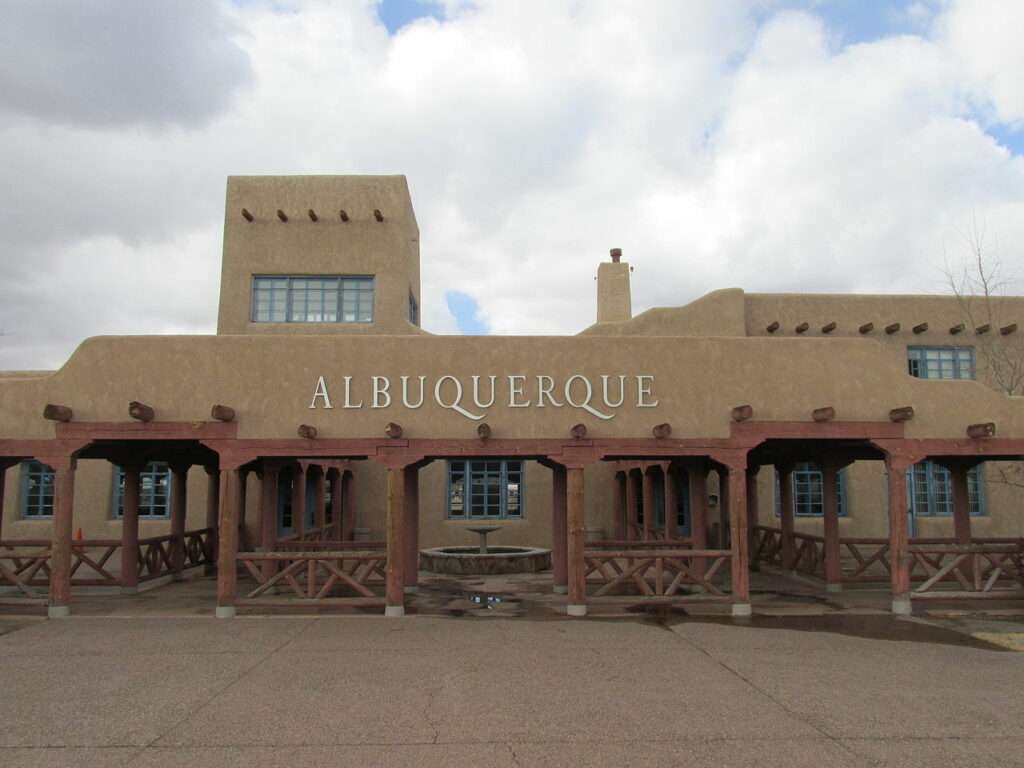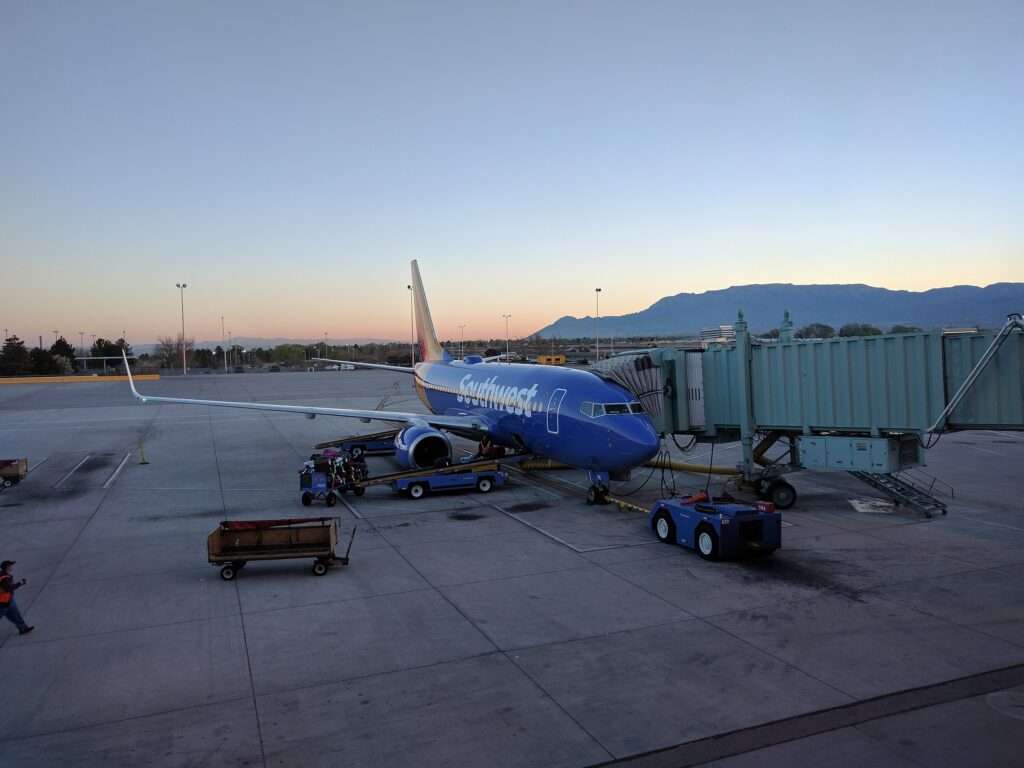Albuquerque International Sunport (ABQ) boasts a rich history intertwined with the growth of Albuquerque itself.
From its humble beginnings as a municipal airport to a thriving international hub, Sunport has witnessed the evolution of air travel and played a pivotal role in connecting New Mexico to the world.
From Dusty Fields to Municipal Airport (1920s-1940s)

The story of Albuquerque‘s air travel starts in the 1920s, when daring pilots used dusty fields on the city’s outskirts for takeoffs and landings.
Recognizing the potential of air travel, city leaders envisioned a dedicated airport.
In 1935, after consolidating two smaller airports, construction began on the Albuquerque Municipal Airport.
Funded by a Works Progress Administration grant, the project cost around half a million dollars and resulted in a facility with two hard-surface runways and a terminal reflecting traditional New Mexico architecture.
The airport officially opened in 1937, catering to a small number of propeller-driven airplanes.
However, its strategic location soon attracted the attention of the military.
During World War II, the US Army Air Corps took over the airport for training purposes, renaming it Kirtland Army Base.
This period saw an increase in activity, laying the groundwork for future commercial expansion.
Post-War Boom and the Rise of Sunport (1950s-1960s)

Following the war, Albuquerque experienced a population boom.
This, coupled with the rise of commercial airlines, highlighted the need for a dedicated civilian airport.
In 1946, the city regained control of the facility, returning its name to Albuquerque Municipal Airport.
The 1950s witnessed a surge in passenger traffic.
It became increasingly clear that the original terminal could no longer handle the growing demand.
In 1963, a pivotal moment arrived – the airport was officially christened “Albuquerque Sunport,” reflecting its sunny skies and welcoming atmosphere.
This period also saw the arrival of new airlines like Trans Texas Airways, solidifying Sunport’s position as a regional air travel hub.
To accommodate the burgeoning passenger numbers, construction commenced on a brand new terminal designed by architect William E. Burk Jr. Opened in 1965, this terminal, with its eight gates and modern design, marked a significant leap forward for Sunport.
Embracing International Status and Continued Growth (1970s-1990s)

The 1970s ushered in a new era for Sunport.
In recognition of its expanding reach beyond domestic destinations, the airport achieved international status in 1971, prompting another name change – Albuquerque International Airport.
This period also saw the first expansion of the new terminal with the addition of a west wing to accommodate larger, wide-body aircraft.
Airline deregulation in 1978 fostered increased competition and more choices for travelers.
Major airlines like American, Delta, and United established a presence at Sunport, further solidifying its position as a key gateway to the Southwest.
The 1980s and 1990s witnessed continued growth.
The terminal was expanded further, with additional gates and concourses added to handle the rising passenger volume.
Commuter airlines also played a significant role, connecting Sunport to smaller communities within New Mexico and neighboring states.
Mesa Airlines, for instance, established a hub at Sunport, offering a network of regional connections.
The 21st Century: Adapting to a Changing Landscape (2000s-Present)
The 21st century brought new challenges and opportunities for Sunport.
The September 11th attacks significantly impacted air travel, necessitating heightened security measures.
Sunport adapted by upgrading its security infrastructure and procedures.
The industry landscape continued to evolve with the rise of low-cost carriers like Southwest Airlines and Spirit Airlines.
Albuquerque International Sunport embraced this shift, becoming a popular hub for budget-conscious travelers.
Modernization efforts remained a priority.
The terminal underwent renovations to improve passenger flow and enhance the overall travel experience.
Sustainability also became a focus, with Sunport implementing initiatives to reduce its environmental footprint.
Today, Albuquerque International Sunport stands as a testament to the city’s growth and its role as a major transportation hub in the Southwest.
Looking ahead, Sunport is poised to continue adapting to the ever-evolving world of air travel, ensuring its place as a vital gateway connecting New Mexico to the world.

Click the banner to subscribe to our weekly newsleter.

Click the photo to join our WhatsApp channel so then you can stay up to date with everything going on in the aviation industry!









